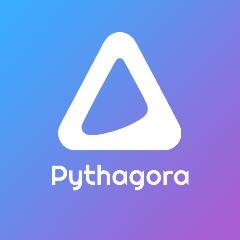Introducing GPT Pilot: Revolutionizing Software Development with AI
GPT Pilot is a cutting-edge, AI-powered platform that revolutionizes the software development process by simplifying the creation of production-ready applications. It aims to automate up to 95% of coding tasks, allowing developers to focus on the strategic aspects of their projects while maintaining oversight for quality assurance.
How GPT Pilot Works: Embracing a Multi-Agent Approach
GPT Pilot utilizes a sophisticated multi-agent system that mirrors the workflow of a professional software development agency. This system efficiently divides complex projects into manageable tasks and assigns them to specialized AI agents, ensuring a comprehensive and efficient development process.
The Collaborative GPT Pilot Agent Team
- Product Owner Agent: Acts as the initial contact point, understanding business specifications.
- Specification Writer Agent: Delves deeper into project requirements for a thorough scope understanding.
- Software Architect Agent: Defines technical requirements and system architecture.
- DevOps Agent: Sets up the development environment.
- Tech Lead Agent: Breaks down tasks and provides a roadmap for implementation.
- Developer Agent: Gives detailed coding instructions for implementation.
- Code Monkey Agent: Implements the code based on instructions.
- Reviewer Agent: Ensures code quality through critical review.
- Troubleshooter Agent: Identifies and resolves issues to enhance performance.
- Debugger Agent: Focuses on resolving bugs during development.
- Technical Writer Agent: Generates project documentation for clarity.
Key Features and Capabilities
Some standout features of GPT Pilot include its focus on:
- Production-Ready Applications: Designed for creating full applications, not just prototypes.
- Scalable Software Development: Supports scalable project strategies.
- Test-Driven Development (TDD): Incorporates TDD principles for reliable code.
- Granular and Debuggable Code: Generates code that is easy to understand and maintain.
- Continuous Developer Interaction: Allows ongoing developer oversight and refinement.
- Context Rewinding: Handles complex logic through recursive conversations.
Handling Project Complexity and Agent Collaboration
GPT Pilot effectively addresses software development complexities through mechanisms such as:
- Sequential agent activation, task delegation, and specialization.
- Seamless information sharing among agents for a cohesive process.
- Iterative refinement based on feedback for continuous improvement.
- Human intervention at any stage for control and decision-making.
- Self-review mechanisms among agents to maintain quality.
- Problem-solving by breaking down tasks into manageable problems.
Advantages and Limitations
Advantages:
- Step-by-Step Collaborative Development: Promotes teamwork in application development.
- Scalability: Prepares applications for future growth with scalable projects.
- Comprehensive Workflow: Covers all development lifecycle stages.
- Reduced Development Time: Streamlines coding process for efficiency.
Limitations:
- Manual Oversight Required: Developers need to supervise and intervene in the automated process.
- Potential for Unpredictability: AI-driven processes may introduce variations.
In conclusion, GPT Pilot marks a significant advancement in collaborative software development by combining AI capabilities with human expertise. While it acknowledges the necessity of human intervention in the development process, GPT Pilot aims to expedite software creation, empower developers, and ensure high-quality outcomes.



